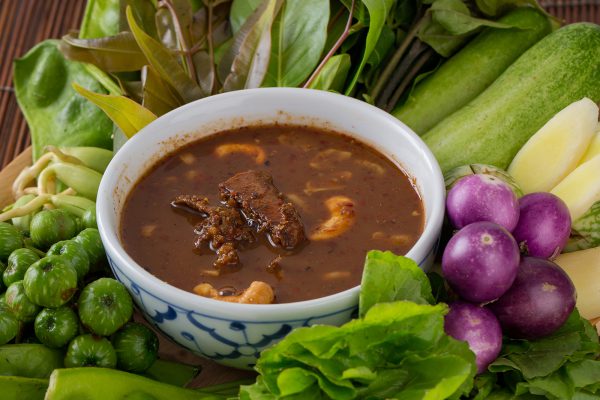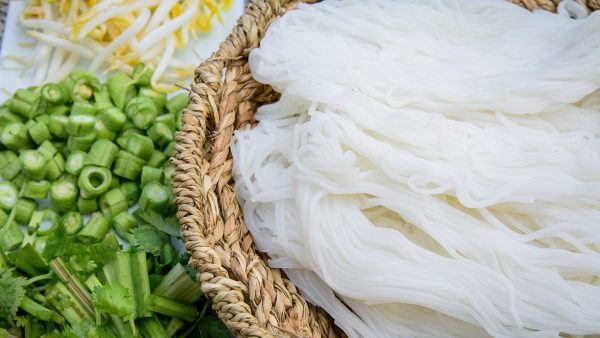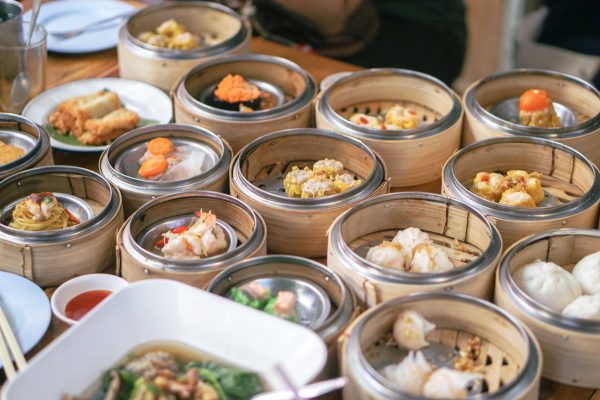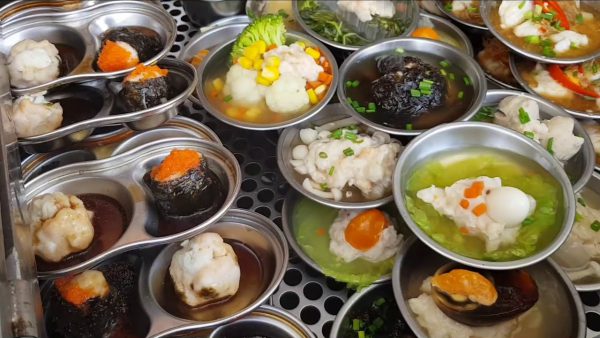PHUKET, 2 March 2021: Forget your hotel breakfast buffet; experiment and explore your dining options in Phuket, starting with the morning pick-me-up meal.
You’ll find that Thailand’s largest island off the Andaman Sea coast is not only a beach paradise but also a food paradise, and the food fun starts at sunrise.

You can experience local cuisine that delivers exotic and distinctive flavours, with an authentic taste that reflects the multicultural background of the southern tourist island.
First, check if you’re prepared for a tingle of heat with the pleasure – hot and spicy flavours to satisfy your appetite. Spicy Kanom Jeen for breakfast may sound like a bold idea for visitors, but for Phuket locals, the extra-hot-and-spicy dish is the preferred way to kick start the day. Kanom Jeen is said to have its origins in the heritage cuisine of Mon people. Today, the Thai style rice noodles dish is an everyday meal enjoyed in different parts of Thailand with diverse local recipes.
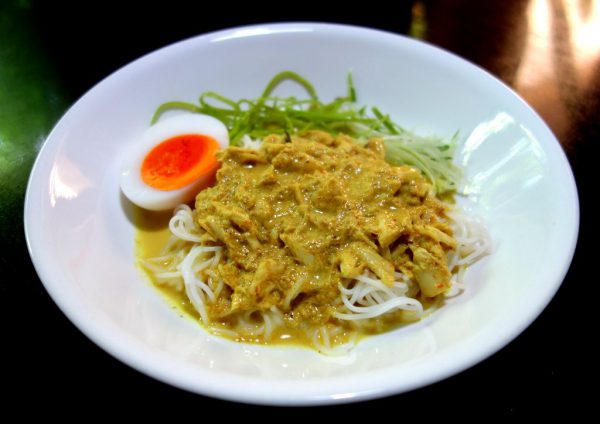
Local Kanoom Jeen shops in Phuket offer choices of “Gaeng” or curry to go to accompany the Kanom Jeen. Most of these curries deliver authentic flavours with no compromise on taste.
Top choices for locals include Kanoom Jeen Nam Ya Pu or Nam YaPla (rice noodles with crab or fish curry) and Kanom JeenGaeng Tai Pla, a traditional southern Thai curry made with fermented fish entrails and a salty sauce. The burning sensation from spices in Gaeng Tai Pla, might feel more like a punch in the mouth, but it adds depth and character to the locals’ favourite recipe. But for those who hesitate, side dishes such as fresh vegetables, boiled eggs, or MuuWaan (caramelized pork), would be perfect accompaniments to help absorb the fiery taste of Gaeng Tai Pla.
Some local people prefer to enjoy Kanom Jeen with a mix of curries. Some like to eat Kanom Jeen with HorMok (steamed curry fish custard), deep-fried fish cakes, deep-fried chicken, or Patongo (deep-fried dough stick).
For those who are not quite sure about stepping out of their comfort zone, ‘Siew Boi’ or Dim Sum breakfast might be a safer culinary option to taste Phuket’s local experience. Dim Sum shops in Phuket are part of the local’s daily life and a venue to enjoy morning coffee council for locals.
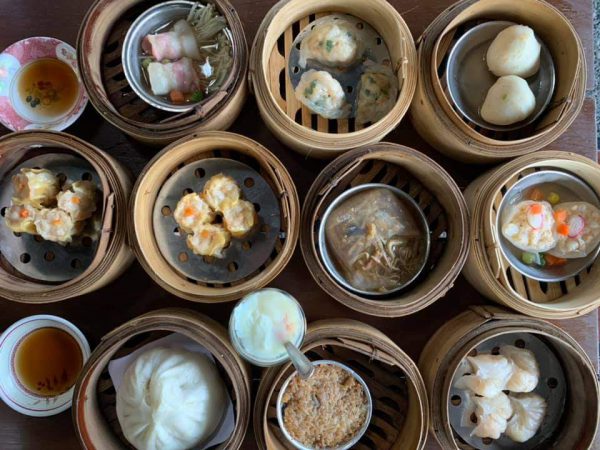
Some of the original Dim Sum shops in Phuket have been in business for a century or more. Visitors can enjoy a wide variety of steamed dim sum menus that deliver Chinese Hokkien culinary heritage flavours. Dim Sum sauce at these local Dim Sum places offers mixed flavours of sour, sweet, and a bit of spicy taste, making Phuket’s Dim Sum meal a unique experience.
Another local favourite is Roti with gaeng or curry. The tasty Muslim Massaman curry, whether with beef, chicken, or fish, goes very well with soft and somewhat crispy Roti. Locals love to add fried eggs as a side dish or a Roti topping. Here, the locals also have a special code to order their Roti with fried eggs. If you go to Roti shops in Phuket and ask for “2:1”, you will get two pieces of Roti and one fried egg. The savoury Roti meal also goes well with Thai milk tea, a refreshingly sweet drink. Roti can also be enjoyed as a dessert. For those who have a sweet tooth, the crunchy flatbread topped with sweetened condensed milk and sugar. Locals firmly believe it is a sound source of energy to sustain you through a busy day.
Apart from Roti, if you ask the locals for Phuket’s signature dessert, the answer would be “O-Aew”. The name refers to jelly cubes made from seeds of the O-Aew plant and banana starch. O-Aew is served with shaved ice and syrup, while locals prefer to add different toppings to enjoy this O-Aew in different ways. The original recipe was introduced to Phuket by Hokkien immigrants during the tin mining era, dated back to the mid-19 centuries. Today, O-Aew is among the locals’ favourite desserts, and it is said that, in Thailand, you can only find this type of dessert in Phuket town.
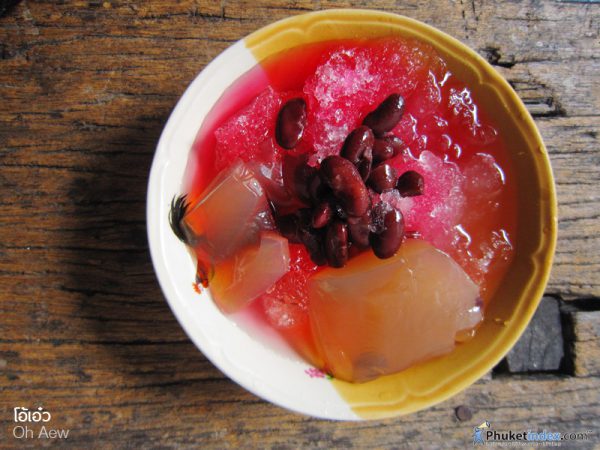
Other local recipes reflect the multicultural background of Phuket such as MeeHokkien (stir-fried egg noodles with red pork, prawns, squids and vegetables), Bee Hoon (rice vermicelli with fried shallots), Lo Ba (deep-fried stewed pig’s head, ears, tongue and entrails served with sweet and sour sauce), O-Taw (fried oyster with flour, taro, and crispy pork), to name a few.
Phuket is listed among UNESCO’s City of Gastronomy, and the people of Phuket are proud of their town’s culinary heritage and continue to keep their food history alive and kicking. The mix of Thai, Chinese, Malay, Indian, and European food cultures is a significant part of Phuket’s heritage. Add to the mix fresh seafood ingredients, and you have the perfect blend of dining options that make Phuket a destination for food lovers. To follow the trends, see the Michelin Guide, check out local food festival schedules, or simply forego the hotel buffet breakfast and explore Phuket’s old town for a Good Morning Phuket meal. All choices are a good fun way to experience a different side of Phuket’s charm.



